|
 |
|
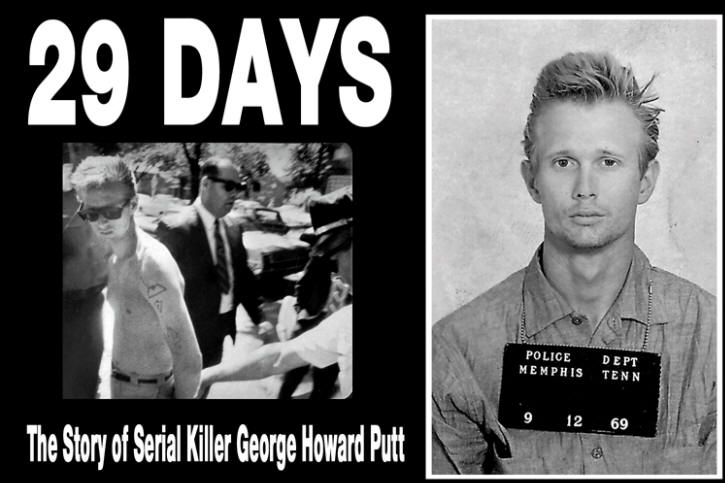
|
|
Introduction
For the
majority of Americans, the summer of 1969 was a time filled
with both fear and anxiety. The war in Vietnam raged on
unabated while the country bitterly grew divided over its
conduct; the Manson Family committed a series of brutal
murders in the Los Angles area, thus ending the “peace and
love” aspect of the hippie movement; and the massacre of
civilians at the South Vietnamese village of My Lai by
American soldiers caused citizens to question the honor of
our country’s military. Memphians also had further reason
for fear during the summer of 1969, as of a series of
gruesome murders occurred which had the Memphis Police
Department stumped and gun stores doing record business.
Memphis had
lost its civic innocent on April 4, 1968, with the
assassination of Dr. Martin Luther King on the second-floor
balcony of the Loraine Motel. While the ensuing civil
unrest was troubling, it did not reach the intensity of that
in other cities. Memphis was for the most part, still a
peaceful southern city. Children rode their bikes at night;
adults stood in their yards and talked to neighbors. Doors
were always open and in typical southern fashion, nobody was
a stranger.
That
idyllic situation would soon change with the arrival in
Memphis of a 23 year-old, lanky, blonde haired man named
George Howard Putt.
|
|
George Howard Putt:
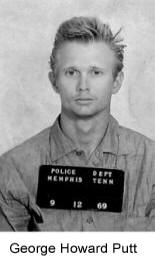 George
Howard “Buster” Putt had spent most of his adolescent life
in juvenile correctional facilities throughout the south on
various charges ranging from kidnapping to rape. In March
1946, he was born at the Charity Hospital of Louisiana in
downtown New Orleans to a pair of drifters named Clifford
and Leola Putt. He spent most of his childhood moving around
the southeast until his parents finally were both sentenced
to prison. He was then sent to live with his grand-parents
in North Carolina before eventually being remanded to the
Richmond Home for Boys after an incident with an air rifle. George
Howard “Buster” Putt had spent most of his adolescent life
in juvenile correctional facilities throughout the south on
various charges ranging from kidnapping to rape. In March
1946, he was born at the Charity Hospital of Louisiana in
downtown New Orleans to a pair of drifters named Clifford
and Leola Putt. He spent most of his childhood moving around
the southeast until his parents finally were both sentenced
to prison. He was then sent to live with his grand-parents
in North Carolina before eventually being remanded to the
Richmond Home for Boys after an incident with an air rifle.
During
Putt’s residence in Richmond, he attempted to rape two
teenage girls and as a result was sentenced by the state to
a state psychiatric care institute. He soon escaped custody
until the 16 year old Putt was arrested in Texas, where he
was once again institutionalized in a mental care facility.
While there, a staff psychiatrist described him as "a
psychopath capable of committing almost any crimes."
Upon
reaching his 21st birthday, Putt was released
from incarceration in Texas and soon moved to the North
Mississippi area. There he met 18 year old Mary Ruth
Bulimore, a 1967 graduate of Coldwater High School. The
former 4H club member was a native of the small Mississippi
Delta town of Sarah and worked as a waitress at the Blue &
White Café in Tunica.
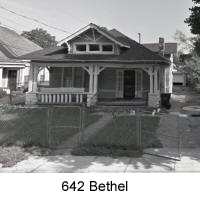 Coincidently,
Bulimore was pregnant with the child of Putt’s brother
Clifford. The couple moved to Tupelo, Mississippi and soon
found employment. The child would be born in Memphis during
1968 and named George Howard Putt, Jr. Coincidently,
Bulimore was pregnant with the child of Putt’s brother
Clifford. The couple moved to Tupelo, Mississippi and soon
found employment. The child would be born in Memphis during
1968 and named George Howard Putt, Jr.
On May 5,
1969, Putt was arrested by the Jackson Mississippi Police
Department and charged with burglary, for which he received
a six month sentence. Putt escaped from detention and
arrived in Memphis in 1969 along with his wife. The two
rented a furnished room in a 58 year-old, one-story bungalow
located at 642 Bethel in the Greenlaw District. Putt
drifted from various jobs and was fired from his job as a
gas station attendant for stealing $30.
|
|
August 14, 1969: Roy and
Bernalyn Dumas
 The
afternoon of August 14, 1969, was typical of the hot, humid
Memphis summer. World War II veterans Roy and Bernalyn Dumas
were quietly relaxing inside their midtown apartment at 1133
South Cooper in the Hermitage Apartment Complex. The Dumas
family lived on the first floor of the relatively new,
two-story brick complex. The outside temperature was
in the mid-nineties and the two were trying their best to
beat the oppressive Memphis heat. Bernalyn had just arrived
home from work and was too tired to change out of her
nursing uniform. The couple had plans for the night
and were anxiously awaiting the evening. However, only
a few miles away, a 23 year-old gas station attendant named
George Howard Putt was on the verge of making the
transformation from petty criminal to brutal, serial
killer. The
afternoon of August 14, 1969, was typical of the hot, humid
Memphis summer. World War II veterans Roy and Bernalyn Dumas
were quietly relaxing inside their midtown apartment at 1133
South Cooper in the Hermitage Apartment Complex. The Dumas
family lived on the first floor of the relatively new,
two-story brick complex. The outside temperature was
in the mid-nineties and the two were trying their best to
beat the oppressive Memphis heat. Bernalyn had just arrived
home from work and was too tired to change out of her
nursing uniform. The couple had plans for the night
and were anxiously awaiting the evening. However, only
a few miles away, a 23 year-old gas station attendant named
George Howard Putt was on the verge of making the
transformation from petty criminal to brutal, serial
killer.
The Dumas
family’s first floor apartment was located directly adjacent
to the busy Southern Railroad tracks in the middle-income,
Cooper-Young neighborhood. The Hermitage Apartment complex
was relatively new, having just opened in 1965. Previously,
the Dumas’ had lived for 17 years at 2096 Labelle Street in
South Memphis before moving when their son left home to
attend Ole Miss.
Roy Kenner
Dumas truly epitomized the term “War Hero”. The 58 year old
self-employed accountant was born in rural Bald Knob,
Arkansas and worked as manager at a restaurant located at
271 Poplar Avenue in Memphis before the war. During World
War II, Dumas served for three years in the Army and
attained the rank of Sergeant. During combat, he received an
almost fatal abdominal wound and as a result, was reduced to
a weight of only 100 pounds. For his combat gallantry,
Dumas was awarded both a Bronze Star and a Presidential
Citation.
Bernalyn
Dumas, 46, was employed as a nursing supervisor at Baptist
Hospital on Union Avenue. At the time, Baptist Hospital in
Memphis was one of the largest privately-owned hospitals in
the country. Before the war, she attended nursing school
and served as a nurse during World War II. Dumas served in
the Army and attained the rank of Second Lieutenant. In
March 1948, she gave birth to the couple’s only child,
Michael Eugene Dumas.
Later that
night, Roy and Bernalyn planned to join their son 22
year-old son, Michael and his wife Tanya, for dinner and a
birthday celebration for the younger Mrs. Dumas. The young
couple had only been married for a few months and had
planned to met Roy and Bernalyn at the restaurant.
Unfortunately, during the afternoon, a lanky, tattooed blond
named George Howard Putt gained entrance into the apartment
and tied the couple-up. Putt would later state to Memphis
Police Department detectives "The only reason I went in
there was for money. I never met Mr. and Mrs. Dumas and I
knew nothing about them." The robbery then turned into a
savage blood-bath as Putt began torturing his helpless
victims.
Roy Dumas
was forced into the guest bedroom by Putt, who then bound
the victim’s ankles and wrists together with suspenders.
The killer then proceeded to choke Roy to death with a gray
sock. In the adjacent bedroom, Bernalyn was tied to the bed
posts and strangled with one of her nursing uniform
stockings. Putt then proceeded to mutilate her vagina and
anus with a pair of surgical scissors. He then took a
nearby lamp and positioned it so an eerie light was cast on
the dead, mutilated body of Mrs. Dumas.
Putt left
the apartment unnoticed by neighbors with Bernalyn’s purse.
He would later state to his wife "When I left their
apartment, I felt pretty sure somebody would find them
before they died."
After
anxiously waiting the arrival of his parents at the birthday
celebration, Michael went to the apartment. He discovered
his mother’s dead, severely traumatized mutilated body tied
to the bed posts. She was still dressed in her now-bloody
Baptist Hospital nursing uniform. In an adjacent bedroom,
officers from the Memphis Police Department found the dead
body of Roy bound and gagged.
Frank
Holloman, then fire and police director, said the double
murder was "the most atrocious and revolting crime he had
seen in years." Police officers found no sign of forced
entry and the killer had left next to nothing in the way of
evidence. Due to the nature of the crime, Memphis Police
officials even speculated that there might be a connection
to the recent murder in Los Angeles of actress Sharon Tate.
Mississippi
State Prison escapee George Howard Putt had made his first
two kills. The 23 year old would calmly watch coverage of
the Dumas murder with his wife on the local television
news.
|
|
August 25, 1969: Leila Witt
Jackson
Alton,
Illinois native Leila Jackson was a kind hearted 80 year old
widow that ran a four-unit apartment house in the heart of
the Memphis Medical Center at 21 North Somerville. Jackson
and her husband, Optometrist Charles Jackson had purchased
the house in September 1945 for their family.
Charles
died in July 1956 and the house was converted into four
apartments along with living quarters for Mrs. Jackson,
located in the back of the dwelling. Her units stayed
occupied with both medical students and professionals from
the nearby hospitals and the University of Tennessee Medical
School.
The elderly
landlord was extra cautious in light of the unsolved Dumas
murders. A few days after learning of the murders, she
ironically stated to a friend that no one would want to rob
her, because she never kept any money in the house. Jackson
was a safety-minded lady and kept her doors locked tightly
at night even before the Dumas murders.
About a
week before the crime, Putt walked from his job at the
Hudson Oil station on South Bellevue to Jackson’s apartment
house on North Somerville. He asked Jackson if he could
rent an apartment from her. The distance was only a few
blocks and whether Putt was staking out a victim and was
somehow scared away is only a guess.
Unfortunately for Jackson, Putt returned to her apartment
house on August 25. He entered through the front door and
tied the 80 year-old up on her bed before strangling her
with a stocking. Putt then went to the kitchen and found a
butcher knife to use in his demented body mutilation. He
made numerous slices to Jackson’s groin, ripping away pieces
of bloody flesh with each cut. Before leaving the victim’s
bedroom, Putt placed a reading lamp over the body to cast an
eerie light of death over the now lifeless body.
When
relatives were unable to contact Jackson on the telephone,
one of her grandsons was sent to find out what was wrong.
He walked through the open front door and eventually ended
up in the bedroom, where he made the horrible discovery.
The grandson found Jackson’s bloody, mutilated body on her
bed with the butcher knife lying beside her on a nightstand.
When
Memphis Police Department Homicide Bureau Chief Robert
Cochran walked into the bedroom where Jackson laid, the
first thing he noticed was the ghastly glare of the reading
lamp on Jackson’s body. It immediately brought to mind the
same scene in Bernalyn Dumas’ bedroom from two weeks
earlier. "When I saw that lamp, I was the loneliest bastard
that ever lived," Cochran would admit later. "I knew it was
the same one."
Detectives
recognized the similarities between the two crime scenes and
summarized that a serial killer was at large. The city, only
a year removed from the assassination of Dr. Martin Luther
King, was again gripped with fear.
Later that evening, Putt watched the news with his wife at
their house on Bethel. "Remember that old lady I tried to
rent the room from over near the Terrace Hotel?" excitedly
stated Putt after watching the story on his recent murder.
"That Mrs. Jackson? Remember her? Somebody killed her just
like that Dumas couple!"
Putt then when on to correctly state “There must be some
kind of really bad nut loose in this town."
|
|
August 29, 1969: Glenda Sue
Harden
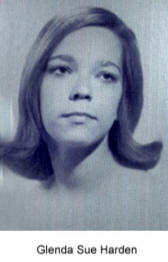 A
beautiful, sunny Memphis Friday afternoon greeted 21
year-old Glenda Sue Harden as she left work at 5:00 pm. She
had recently became engaged to a young man from Ripley,
Tennessee and was ready to enjoy the weekend. Harden
was employed as a typist for the Jackson Life Insurance
Company, located in the Falls Building at 22 Front Street.
She lived with her family in a three bedroom house in the
Wells Station neighborhood at 1256 Holliday. Glenda was a
1965 graduate of Kingsbury High School, majoring in Spanish
and Commercial Arts, while minoring in History. A
beautiful, sunny Memphis Friday afternoon greeted 21
year-old Glenda Sue Harden as she left work at 5:00 pm. She
had recently became engaged to a young man from Ripley,
Tennessee and was ready to enjoy the weekend. Harden
was employed as a typist for the Jackson Life Insurance
Company, located in the Falls Building at 22 Front Street.
She lived with her family in a three bedroom house in the
Wells Station neighborhood at 1256 Holliday. Glenda was a
1965 graduate of Kingsbury High School, majoring in Spanish
and Commercial Arts, while minoring in History.
Harden
walked down Court Street and crossed Riverside Drive to
locate her 1965 Ford Mustang. That morning she had parked
her car on the cobblestone lot that once served as Memphis’
riverfront landing. That afternoon, George Howard Putt had
also parked his 1964 Chevrolet Impala on the historic
cobblestones and waited for his next victim.
Putt
approached Harden after she had entered her car and was
preparing to leave. He forced his way into her car, then
put a knife to her throat and made her crawl into the
passenger-side floorboard. Putt drove Harden to Riverside
Park, where he bound her hands behind her back with her
panty hose. He then brutally murdered Harden by stabbing
her 14 times in the head, neck, chest and back. Putt then
drove her car back to the cobblestone parking lot next to
the river. The killer emptied Harden’s purse and drove off
in his own car.
The next
morning, Memphis Police officers located Harden’s Mustang
parked on the cobblestones at the foot of Monroe Avenue.
Later in the day, officers would locate Harden’s lifeless
body in Riverside Park. Memphis Police and Fire Director
Frank Holloman stated to the news media "We are faced with a
cunning sex killer." A $20,000 reward was offered for
information on the murders as police conducted the largest
manhunt in the city’s history.
|
|
September 11, 1969: Mary
Christine Pickens
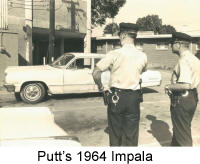 Christine
Pickens had just arrived at her midtown apartment after
ending her work day at noon. She worked as a receptionist
at a dental office in the Sterick Building and had Thursday
afternoons off. Pickens lived on the second floor of the
three story LaBlanche Building, located at 41 North
Bellevue. She was ready to enjoy her afternoon off. It was
her 59th birthday. Christine
Pickens had just arrived at her midtown apartment after
ending her work day at noon. She worked as a receptionist
at a dental office in the Sterick Building and had Thursday
afternoons off. Pickens lived on the second floor of the
three story LaBlanche Building, located at 41 North
Bellevue. She was ready to enjoy her afternoon off. It was
her 59th birthday.
As
Christine Pickens planned out the rest of her day off,
George Howard Putt parked his Chevrolet in the lot adjacent
to the Medical Arts Building at 1177 Madison Avenue. He was
now only a few hundred yards from his next victim.
“I was
getting ready to go to work,” stated Emma Grosse, a nurse
that lived in the same apartment building as the victim, “It
was 1:05 pm. I was fixing a sandwich and I heard my
neighbor scream ‘Murder! Murder! No don’t! Don’t kill me!
Don’t do it!’ I went running down the stairs to catch him.
He was at Christine’s door. He showed me the knife. I was
just afraid.”
Pickens
pleas for help also caught the attention of neighbor Wayne
Armstrong, who retrieved his pistol and began firing at Putt
on the apartment complex parking lot. Putt fled the
apartment complex and with the aid of a parked Dodge truck,
that enabled him to scale a six-foot barb-wired topped
fence. The killer then ran down North Bellevue and made a
turn to the west on Madison Avenue. He then jumped over the
Madison overpass onto the unfinished portion of I-240 and
continued running south.
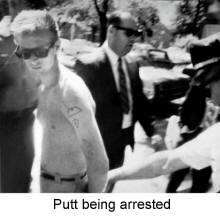 Putt
ran south on the unfinished expressway until he turned east
near Linden Avenue. Putt was fleeing with an ice pick and
one on of Pickens’ stockings but he left the two imbedded in
the wall of an apartment at 217 Pasadena Place. The
gunshots of Armstrong had drawn the attention of police and
soon officers swarmed the area. Police Officers Glenn
Noblin and Phil Scruggs caught a blood soiled Putt at an
apartment complex driveway on Linden Avenue, thus ending one
of the most horrific chapters in Memphis history. Pickens
would later die from the 20 stab wounds she received at the
hands of George Howard Putt. She would become the fifth
victim. Putt
ran south on the unfinished expressway until he turned east
near Linden Avenue. Putt was fleeing with an ice pick and
one on of Pickens’ stockings but he left the two imbedded in
the wall of an apartment at 217 Pasadena Place. The
gunshots of Armstrong had drawn the attention of police and
soon officers swarmed the area. Police Officers Glenn
Noblin and Phil Scruggs caught a blood soiled Putt at an
apartment complex driveway on Linden Avenue, thus ending one
of the most horrific chapters in Memphis history. Pickens
would later die from the 20 stab wounds she received at the
hands of George Howard Putt. She would become the fifth
victim.
After his
arrest, George Howard Putt told reporters, “I’d do it all
again.”
Putt
received a 497 year sentence from Shelby County Criminal
Court Judge William H. Williams, which ends July 19, 2431.
Putt is serving his sentence at Turney Center in Only, TN.
His next parole hearing is scheduled for July 2017.
|
|
Bibliography:
Alton
Illinois, City Directory – 1906
United
States Federal Census - 1930
Memphis,
Tennessee City Directory. R.L. Polk Publishers - 1931
Charity
Hospital of Louisiana at New Orleans Annual Report for the
Year Ended June 30, 1946 (Louis G. Reicke, Vice President
Board of Administrators)
Shelby
County Certificate of Death – Charles Reagan Jackson (July
11, 1956)
Memphis,
Tennessee City Directory. R.L. Polk Publishers - 1960
1964
Panther – Coldwater High School – Coldwater, Mississippi
1965 Talon
– Kingsbury High School – Memphis, Tennessee
Shelby
County Register of Deeds: Book 6134, Page 432. Trust Deed,
January 14, 1967
Shelby
County Register of Deeds: Book 6245, Page 117. July 13,
1967. Court Street Property Warranty Deed.
Shelby
County Register of Deeds: Instrument #F24067 – 21 North
Somerville. – July 14, 1967
Shelby
County Court Clerk Marriage License – June 4, 1969
“Account,
Wife Found Murdered” – Associated Press – August 15, 1969
“Memphis
Police Arrest Escapee For 5 Murders “ - Associated Press –
September 10, 1969
|
|